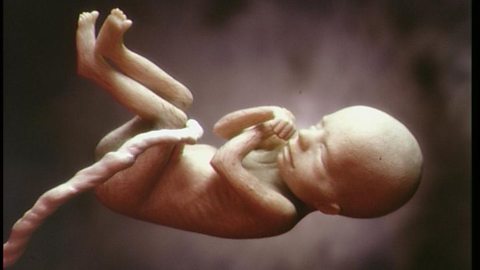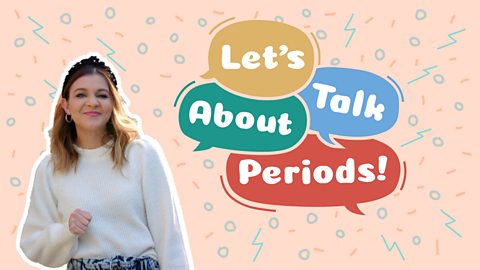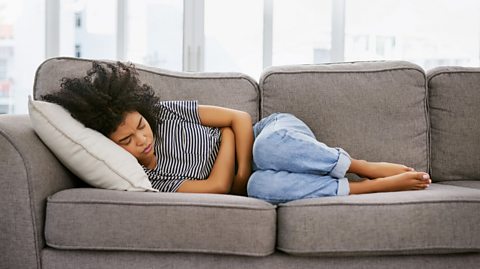Key points
- The menstrual cycle is an approximately 28 day cycle that prepares the female body for pregnancy.
- Hormone levels change during the cycle.
Video
Controlled by chemical signals called hormones, the menstrual cycle prepares the female reproductive system for pregnancy. It lasts 28 days on average, but it can vary from one person to another or one cycle to the next.
When the uterus sheds its lining, it causes a flow of blood called a period. The first day of bleeding is day one of the cycle. Days five to seven, the bleeding slows and stops and the uterus begins growing back its lining. This is controlled by a hormone called oestrogen, which is produced by the ovaries.
Then the body produces a hormone to encourage an egg to mature and another hormone progesterone signals the uterus to keep the lining in place. An egg is released from the ovary into the uterus. The body is at its most fertile now.
Can you answer these questions based on the video?
1. What are the chemical signals that control the menstrual cycle?
2. What happens around day 14 of the cycle?
Hormones.
An ovum (egg cell) is released.
Changes during puberty
The menstrual cycle begins at puberty. It is an approximately 28 day cycle that prepares for pregnancy. The cycle stops during pregnancy.
Most females begin puberty between the ages of eight and 14. Puberty takes about four years during which the following physical changes occur:
- underarm hair grows
- pubic hair grows
- body smell gets stronger
- hips widen
- breasts develop
- ovaries release ova during the menstrual cycle
The menstrual cycle
The menstrual cycle can be longer or shorter than 28 days, especially for young people who have just started having a period.
| Day (approx) | Event |
|---|---|
| 1 | Bleeding from the vagina begins. This is caused by the loss of the lining of the uterus. This is called menstruation or having a period. |
| 5 | Blood loss stops. The lining of the uterus begins to re-grow and an ovumThe egg cell. Plural: ova. starts to mature in one of the ovaries. |
| 14 | ovulationRelease of the mature ovum from the ovary. occurs. The ovum travels through the oviduct towards the uterus. |
| 28 | If the ovum does not join with a sperm cell in the oviduct, the lining of the uterus begins to break down again and the cycle repeats. |
Fertilisation happens if the ovum meets and joins with a sperm cell in the oviduct. The fertilised ovum attaches to the lining of the uterus. During pregnancy, the lining of the uterus does not break down and menstruation does not happen.
The menopause is when the menstrual cycle stops happening. This occurs around age 50, although for some it can be earlier or later. After the menopause it is not possible to have a baby.
Changes in hormones
Hormones are chemical messages that are produced in glands and travel in the bloodstream. Hormone levels change during the menstrual cycle.
There are two key hormones which regulate the menstrual cycle:
Oestrogen - repairs and thickens the uterus. There is an increase in oestrogen just before ovulation.
Progesterone - levels of this hormone increase in the second half of the menstrual cycle. If the ovum is fertilised, levels remain high and menstruation will not occur. If fertilisation has not happened then the level of progesterone will drop and a period will follow.
Test your knowledge
Quiz
More information on periods
GCSE exam dates 2025
Find out everything you need to know about the 2025 GCSE exams including dates, timetables and changes to exams to get your revision in shape.

More on Reproduction
Find out more by working through a topic
- count4 of 5
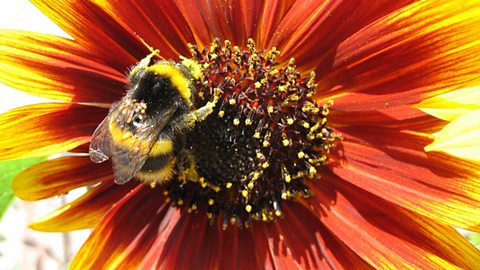
- count5 of 5
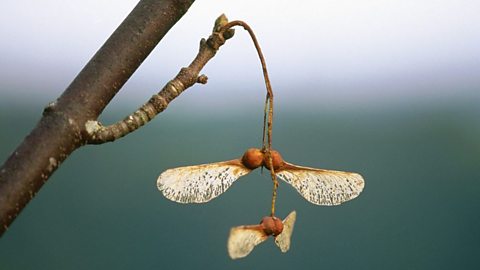
- count1 of 5
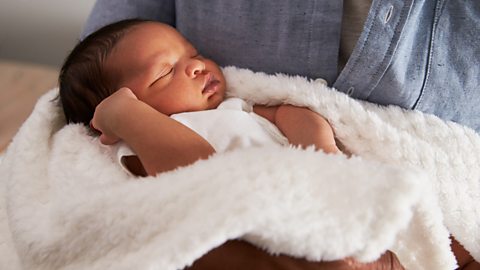
- count2 of 5
